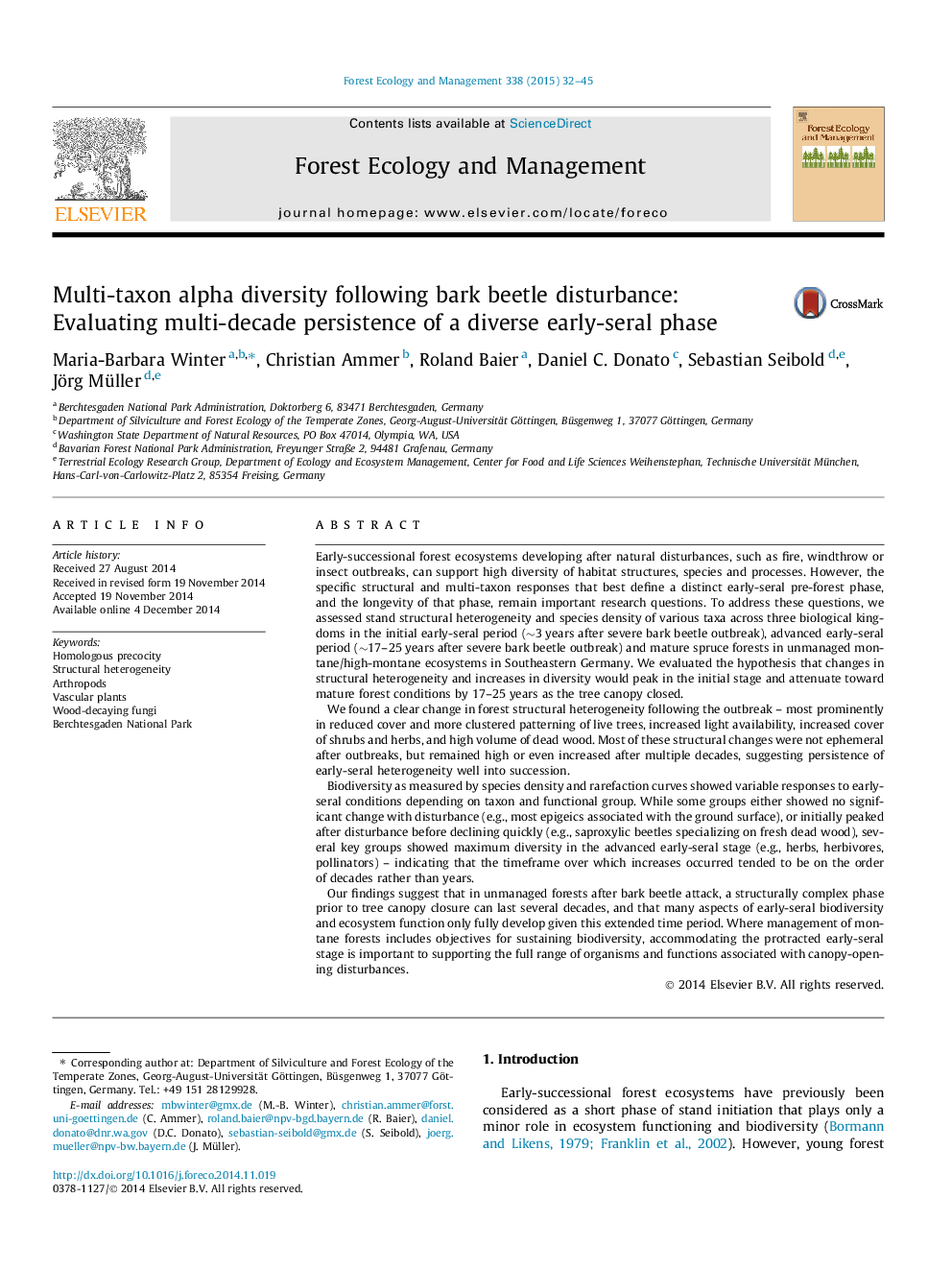| کد مقاله | کد نشریه | سال انتشار | مقاله انگلیسی | نسخه تمام متن |
|---|---|---|---|---|
| 86378 | 159183 | 2015 | 14 صفحه PDF | دانلود رایگان |
• Spruce bark beetle infestations significantly change forest structural heterogeneity.
• Early-seral heterogeneity persists for at least three decades in mountain forests.
• Autotrophs, phytophagous and pollinators benefit in early-seral stage.
• Protracted regeneration periods are recommended for forest management to support biodiversity.
Early-successional forest ecosystems developing after natural disturbances, such as fire, windthrow or insect outbreaks, can support high diversity of habitat structures, species and processes. However, the specific structural and multi-taxon responses that best define a distinct early-seral pre-forest phase, and the longevity of that phase, remain important research questions. To address these questions, we assessed stand structural heterogeneity and species density of various taxa across three biological kingdoms in the initial early-seral period (∼3 years after severe bark beetle outbreak), advanced early-seral period (∼17–25 years after severe bark beetle outbreak) and mature spruce forests in unmanaged montane/high-montane ecosystems in Southeastern Germany. We evaluated the hypothesis that changes in structural heterogeneity and increases in diversity would peak in the initial stage and attenuate toward mature forest conditions by 17–25 years as the tree canopy closed.We found a clear change in forest structural heterogeneity following the outbreak – most prominently in reduced cover and more clustered patterning of live trees, increased light availability, increased cover of shrubs and herbs, and high volume of dead wood. Most of these structural changes were not ephemeral after outbreaks, but remained high or even increased after multiple decades, suggesting persistence of early-seral heterogeneity well into succession.Biodiversity as measured by species density and rarefaction curves showed variable responses to early-seral conditions depending on taxon and functional group. While some groups either showed no significant change with disturbance (e.g., most epigeics associated with the ground surface), or initially peaked after disturbance before declining quickly (e.g., saproxylic beetles specializing on fresh dead wood), several key groups showed maximum diversity in the advanced early-seral stage (e.g., herbs, herbivores, pollinators) – indicating that the timeframe over which increases occurred tended to be on the order of decades rather than years.Our findings suggest that in unmanaged forests after bark beetle attack, a structurally complex phase prior to tree canopy closure can last several decades, and that many aspects of early-seral biodiversity and ecosystem function only fully develop given this extended time period. Where management of montane forests includes objectives for sustaining biodiversity, accommodating the protracted early-seral stage is important to supporting the full range of organisms and functions associated with canopy-opening disturbances.
Journal: Forest Ecology and Management - Volume 338, 15 February 2015, Pages 32–45
